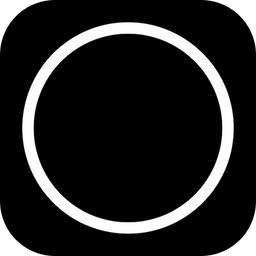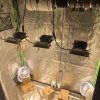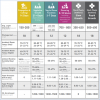Max Par in flower? :D
- Thread starter Adi1989
- Start date
Three Berries
Well-Known Member
Unfortunately no LED numbers.
12th Nov, 2014
Fatemeh Meskini
University of Zanjan
The Photosynthetically Active Radiation(PAR) measure of radiant power is important in evaluating the effect of light on plant growth. In 1972 it was shown by K. McCree (Agric. Meteorol., 10:443, 1972) that the photosynthetic response correlates better with the number of photons than with energy. This is expected because photosynthesis is a photochemical conversion where each molecule is activated by the absorption of one photon in the primary photochemical process.
PAR is defined in terms of photon (quantum) flux, specifically, the number of moles of photons in the radiant energy between 400 nm and 700 nm. One mole of photons is 6.0222 x 10 ^23 photons (6.0222 x 10^ 23 is Avagadro’s Number).
The Photosynthetic Photon Flux Density(PPFD), i.e., the photon irradiance, is expressed in moles per square meter and per second (formerly, Einsteins per square meter and per second).
There is not a general conversion factor between photon measurements and energy or light measurements for broad band radiation. However, a specific conversion factor can be determined for a given spectral power distribution, e.g., a particular light source. This is of practical value because conventional lighting calculation techniques can be used for design of plant growth areas and because color corrected light or illuminance meters can be used to measure PAR values. Some plant scientists want a conversion for the photon flux in the 400 nm to 800 nm band although it is not the standard PAR metric (see CIE Publication 106, Section 8, 1993); this conversion also has been included.
please see the attached pdf filll to obtain conversion factors from lm/m^ 2 (lux) to micromoles per second and per square meter,
 www.apogeeinstruments.com
www.apogeeinstruments.com
12th Nov, 2014
Fatemeh Meskini
University of Zanjan
The Photosynthetically Active Radiation(PAR) measure of radiant power is important in evaluating the effect of light on plant growth. In 1972 it was shown by K. McCree (Agric. Meteorol., 10:443, 1972) that the photosynthetic response correlates better with the number of photons than with energy. This is expected because photosynthesis is a photochemical conversion where each molecule is activated by the absorption of one photon in the primary photochemical process.
PAR is defined in terms of photon (quantum) flux, specifically, the number of moles of photons in the radiant energy between 400 nm and 700 nm. One mole of photons is 6.0222 x 10 ^23 photons (6.0222 x 10^ 23 is Avagadro’s Number).
The Photosynthetic Photon Flux Density(PPFD), i.e., the photon irradiance, is expressed in moles per square meter and per second (formerly, Einsteins per square meter and per second).
There is not a general conversion factor between photon measurements and energy or light measurements for broad band radiation. However, a specific conversion factor can be determined for a given spectral power distribution, e.g., a particular light source. This is of practical value because conventional lighting calculation techniques can be used for design of plant growth areas and because color corrected light or illuminance meters can be used to measure PAR values. Some plant scientists want a conversion for the photon flux in the 400 nm to 800 nm band although it is not the standard PAR metric (see CIE Publication 106, Section 8, 1993); this conversion also has been included.
please see the attached pdf filll to obtain conversion factors from lm/m^ 2 (lux) to micromoles per second and per square meter,
- Conversi
on_lux.pdf
12.78 KB
PPFD to Lux Conversion
Three Berries
Well-Known Member
LeastExpectedGrower
Well-Known Member
I'm a nobody with minimal experience...though I worry less about the PPFD and way more about DLI, which is the amount of light a plant wants to see in a day. More than it needs and there's no net benefit beyond paying more for electricity. But of course DLI Calculates with hours of light and that changes across the cycle usually.
Even if you have another meter, the Photone website has a good calculator on it...pick your week of growth, tell it your light schedule and then your PPFD and it tells you not only if you're in the right ballpark, too high, too low but also where you should look to tweak your light setup.
 growlightmeter.com
growlightmeter.com

Even if you have another meter, the Photone website has a good calculator on it...pick your week of growth, tell it your light schedule and then your PPFD and it tells you not only if you're in the right ballpark, too high, too low but also where you should look to tweak your light setup.
Photone - Grow Light Meter

Three Berries
Well-Known Member
Well according to my new Lux light meter I'm was getting 74500 Lux out of my 60ww LED arrays at the plant top. The calculator says Multiply the Lux by the conversion factor to get PPFD. For example, full sunlight is 108,000 Lux or 2000 µmol m-2 s-1 (108,000 ∗ 0.0185). The DLI calculator says I'm way over lit for the flower stage with that light. I have two other types with less output also in use towards the center.
LeastExpectedGrower
Well-Known Member
I found that I bombed my seedlings with too much light and paid the price for that...Once I got snuggly with DLI ranges things seemed to go better. Even once I was on board I didn't re-adjust when I went into flower and now I've re-done that as well.Well according to my new Lux light meter I'm was getting 74500 Lux out of my 60ww LED arrays at the plant top. The calculator says Multiply the Lux by the conversion factor to get PPFD. For example, full sunlight is 108,000 Lux or 2000 µmol m-2 s-1 (108,000 ∗ 0.0185). The DLI calculator says I'm way over lit for the flower stage with that light. I have two other types with less output also in use towards the center.
I currently have 675w of QB LED (3x HLG225) and a mere 14 square foot area...and even raised up all the way, I had to slightly dim to get the canopy top to hit 38-45 DLI which is probably still a bit high. I ended up reducing my light-schedule by an hour to dial that in.
Three Berries
Well-Known Member
I just bought a couple of 1000w LED arrays to replace all I have now for flower. I've got about 15 sq ft too.I found that I bombed my seedlings with too much light and paid the price for that...Once I got snuggly with DLI ranges things seemed to go better. Even once I was on board I didn't re-adjust when I went into flower and now I've re-done that as well.
I currently have 675w of QB LED (3x HLG225) and a mere 14 square foot area...and even raised up all the way, I had to slightly dim to get the canopy top to hit 38-45 DLI which is probably still a bit high. I ended up reducing my light-schedule by an hour to dial that in.
LeastExpectedGrower
Well-Known Member
Yeah, dialing them in and then back took me a few days. Balancing for the heat along with my ventilation wasn't terribly bad, but I was surprised when I got them in and raised all the way I was ending up with a PPFD that was in the 900 range which was too much for my 18/6 autos. I pulled down the brightness a little bit and also moved to 17/7 and ended up where I wanted to be.I just bought a couple of 1000w LED arrays to replace all I have now for flower. I've got about 15 sq ft too.

Bigger square QB's wouldn't work quite as well in this space because it's 33" deep by 60" wide. Fans on boxes has now also been changed...they're hanging on either end suspended upside down.
I'm more interested in the extra intensity once I move from the auto seeds I have to photoperiod. Since you're at 12/12 you can sustain more brightness during your lights on period since you're doing it for 1/3 less time.
Three Berries
Well-Known Member
What I have is growing pretty close to the LED so the plant doesn't seem to mind. I just raised everything today so maybe 6"-8" away. I don't want any foxtailling issues but isn't that more heat related?
LeastExpectedGrower
Well-Known Member
I've always heard it mentioned in terms of heat.What I have is growing pretty close to the LED so the plant doesn't seem to mind. I just raised everything today so maybe 6"-8" away. I don't want any foxtailling issues but isn't that more heat related?
This data is from 2014 which means they’re using designs for LED’s that are completely antiquated, perhaps dating back to 2013 or earlier. The LED market is vastly different now from just a few years ago, much less almost a decade ago. When I unarchived my grow tent this year, I got Kind to send me the PAR map and PPFD data for the Kind XL 600 that I bought in 2017. Within a few minutes of getting those documents, the Kind was back in its box and the box was in the trash. I’d be surprised to find an LED on the market today that’s as inefficient as those listed here.
While those data may well be correct, though antiquated, a major factor in acceptance of LED’s in the marketplace is the cost of operation of the light in the grow site. While it has both benefits and drawbacks, LED’s generate very little heat. In a cold climate, that heat needs to be replaced, whereas, in a temperate or hot climate, the HVAC upfront and on going costs are significantly less than using a non-LED light fixture. And then there’s the lowered cost of maintenance since LED’s have such a long lifespan.
A more esoteric datum is the light output falloff from LED’s as they age. I haven’t seen that published so I don’t know it if is (in)significant.


